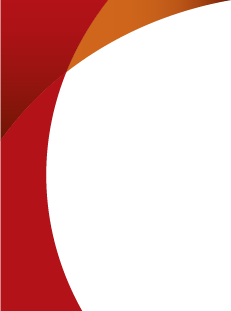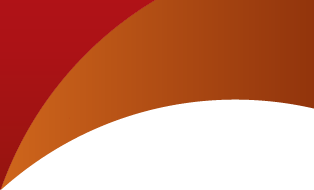Blog IoT Tech Day 2016
Published on: Author: Gerard Simons Category: Data ScienceBlog IoT Tech Day 2016
Because data science is such a novel and expanding area, it is very important to stay on top of new and upcoming technologies. The Internet of Things (IoT) is a field in which many exciting new technologies are being developed. The driving idea behind IoT is to go beyond connecting humans to each other through the internet, by additionally connecting a large variety of devices to the internet. This will create a giant network of sensors and actuators that will augment our society with real-time intelligence.
The role of data science in this is clear. The sensors involved in IoT will create huge numbers of data streams that cannot be processed using conventional methods. Deriving intelligence and defining clear actions from the data will only be possible after sophisticated predictive models have been built – an area of expertise that lies firmly in the domain of data science.
IoT Tech Day
The IoT Tech Day resulted from a considerable expansion of the IoT Developers Day. It is hosted by the Netherlands Java User Group (@nljug) to provide developers, entrepreneurs and others with the necessary knowledge to get involved in IoT.
A brief summary on the event website reads as follows:
The Internet of Things (IoT) Tech Day 2016 will bring together key industries, developers and IoT enthusiasts from all around the world for a day of thought leading presentations, enlightening workshops and top level speakers. The topics of the IoT Tech Day 2016 include: Developing for the IoT, Smart Cities, Connected Living, Health, Wearables, Data & Security and many other IoT-related content. Introducing and exploring the latest innovations within the world of the Internet of Things, the IoT Tech Day 2016 is not to be missed.
This year’s event consisted of various parallel talks throughout the day, periodic keynote presentations from the sponsors and some hands-on hackathons. There were also plenty of coffee breaks to allow you to visit the stands of various companies such as Cap Gemini, ING, CGI, Rijksoverheid and the IoT Academy. The day ended with some drinks, networking and the usual bitterballen (deep-fried breadcrumb-covered balls with a creamy ragout filling).
Talks
The following is a brief summary of some of the more interesting talks that I attended:
1. Unleashing the Data of your Fitness Tracker
The very first talk, early in the morning, was given by Bas Knopper, who in his spare time set out to access the data collected by his FitBit. It was a nice little hobby project that showed you in a very hands-on way how to get the data from FitBit servers using RESTful API calls to their servers, and then process them using Java and Spring as the back-end and AngularJS as the front-end to show a website displaying the personal best results.
2. A Gopher in my Raspberry Pi
Go is a fast, statically typed programming language originally developed by Google. It is gaining momentum due to its high efficiency in both computation and memory, because it compiles to native machine code. Despite this, it is still a rather high-level language with clean constructs and high expressivity, which looks more like Python than some compiled languages such as C++.
The main idea of the talk was to show the effectiveness of using this language on a Raspberry Pi, a microcontroller often used by IoT techies as a basic computing device. This device has many possibilities as a micro PC in controlling and networking IoT solutions, but it has limited resources, making Go especially useful for this device.
Harry de Boer, who gave the talk, showed us how he used Go to measure the moisture content of the soil of one of his houseplants and, if necessary, water it. He then demonstrated how he could quickly create a simple HTTP server to display the water content in real time.
3. IoT Academy
One of the last talks I attended was delivered by Niels Stamhuis on behalf of the IoT Academy, which is a collaboration between KNP, RDM Makerspace and various other partners. He quickly and smoothly presented a number of interesting concepts and projects they are working on.
An interesting aspect of most of their work is how they employ rapid prototyping techniques to get a proof of concept done quickly and then start thinking about a fully-fledged solution, called the proof of solution. Some of the technologies they use for this are LittleBits – which are simple sensors, combiners and actuators that can be clicked together to create simple IoT systems – and Node-RED, which can be used to visually create IoT networks.
4. RIVM
In the final talk I attended the RIVM, the Dutch institute for public health and environment, discussed its involvement with IoT. The continuing drop in sensor prices will make it possible for governmental agencies to better track the quality of air in the Netherlands.
The speaker discussed various sensors, such as those that detect nitrogen dioxide, carbon monoxide, and fine and ultra-fine particles. It seems that, in general, this field profits much less from declining sensor prices as the sensors required for detecting fine and ultra-fine particles are still very expensive A sufficiently accurate sensor costs thousands of dollars. The primary difficulty is that these tiny particles are very hard to detect. The situation is somewhat better in the case of nitrogen dioxide and carbon monoxide, as one can get accurate sensors for several hundred dollars.
The prohibitive cost means that it is still difficult to do fine-grained air quality measurements across the country. The RIVM hopes that these prices will drop further, but understands that this decline is much slower than the decline in the prices of other, simpler sensors.
Conclusion
Most of the talks at the event were technologically sophisticated, well presented and not too much of a sales pitch for products or services. Unfortunately, there were also somewhat less interesting talks. Some of the keynote speeches were overly corporate, for example, filled with hot air rather than anything of substance. And some keynote speakers spent too much time promoting their products rather than focusing on the technology.
Nevertheless, overall, the talks were very interesting. Paired with the networking opportunities, it made the event a success and really opened my eyes to the interesting world of IoT.





this is so nice.Thanks for sharing the article.